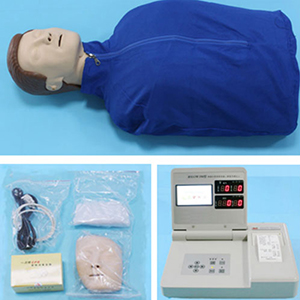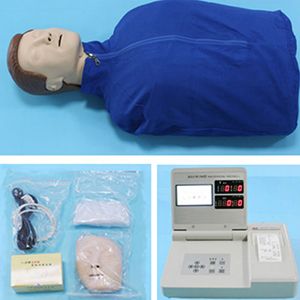Advanced electronic half-body cardiopulmonary resuscitation simulator is an advanced teaching tool in medical training, which is widely used in the training of cardiopulmonary resuscitation (CPR) skills. It combines modern electronic technology with a highly simulated manual design to simulate patient responses in different emergency situations. So, can these simulators truly reproduce the clinical emergency environment? What is their clinical significance in medical education?
1. Highly restore clinical scenes
By simulating a variety of physiological reactions (such as heartbeat, breathing, body temperature, etc.), advanced electronic CPR simulators can largely restore the tense atmosphere during clinical first aid. Simulators can not only simulate normal physiological states, but also show a variety of clinical abnormal reactions, such as cardiac arrest, airway obstruction, etc., to help students understand and master the skills to deal with emergency situations.

Advanced electronic half-body CPR simulator
2. Accurate real-time feedback
Unlike traditional paper-based or expository teaching, these simulators can provide real-time feedback based on the students' actions. For example, whether the depth and frequency of chest compression meet the standard, whether the compression is in place, and the amplitude of recovering the chest rebound will be accurately recorded and fed back to the student. In this way, students can correct errors in operation in a timely manner, ensuring the standardization and effectiveness of skills.
3. Diversified clinical scenario simulation
Advanced simulators can simulate a variety of clinical emergency situations, including patients of different ages (such as infants, children, and adults), and different cardiac conditions (such as cardiac arrest, arrhythmia, etc.). This diverse set of scenarios allows participants to tackle different clinical challenges and develop their clinical resilience.
4. Data-driven learning improvement
Modern simulators not only have a high degree of physiological simulation ability, but also can record detailed data of each operation, including operation time, accuracy, etc. Through this data, teachers can analyze the performance of students and give personalized guidance according to the weak points of students. This digital learning method greatly improves the efficiency and accuracy of teaching.
Data support:
A study of electronic CPR simulators showed that participants trained with these advanced simulators improved their accuracy by about 25 percent in practice. In addition, simulation training allows participants to complete more operations in a short period of time, which significantly enhances the proficiency of CPR skills.
Conclusion
Overall, the advanced electronic CPR simulator not only provides a visual and physiological realistic reproduction of the clinical emergency environment, but also enables participants to optimize their operational skills as they learn through data support and personalized feedback. For medical students, using this technology for cardiopulmonary resuscitation training can better understand the practical application of clinical first aid, improve the ability to deal with emergency situations, and lay a solid foundation for future clinical work.

